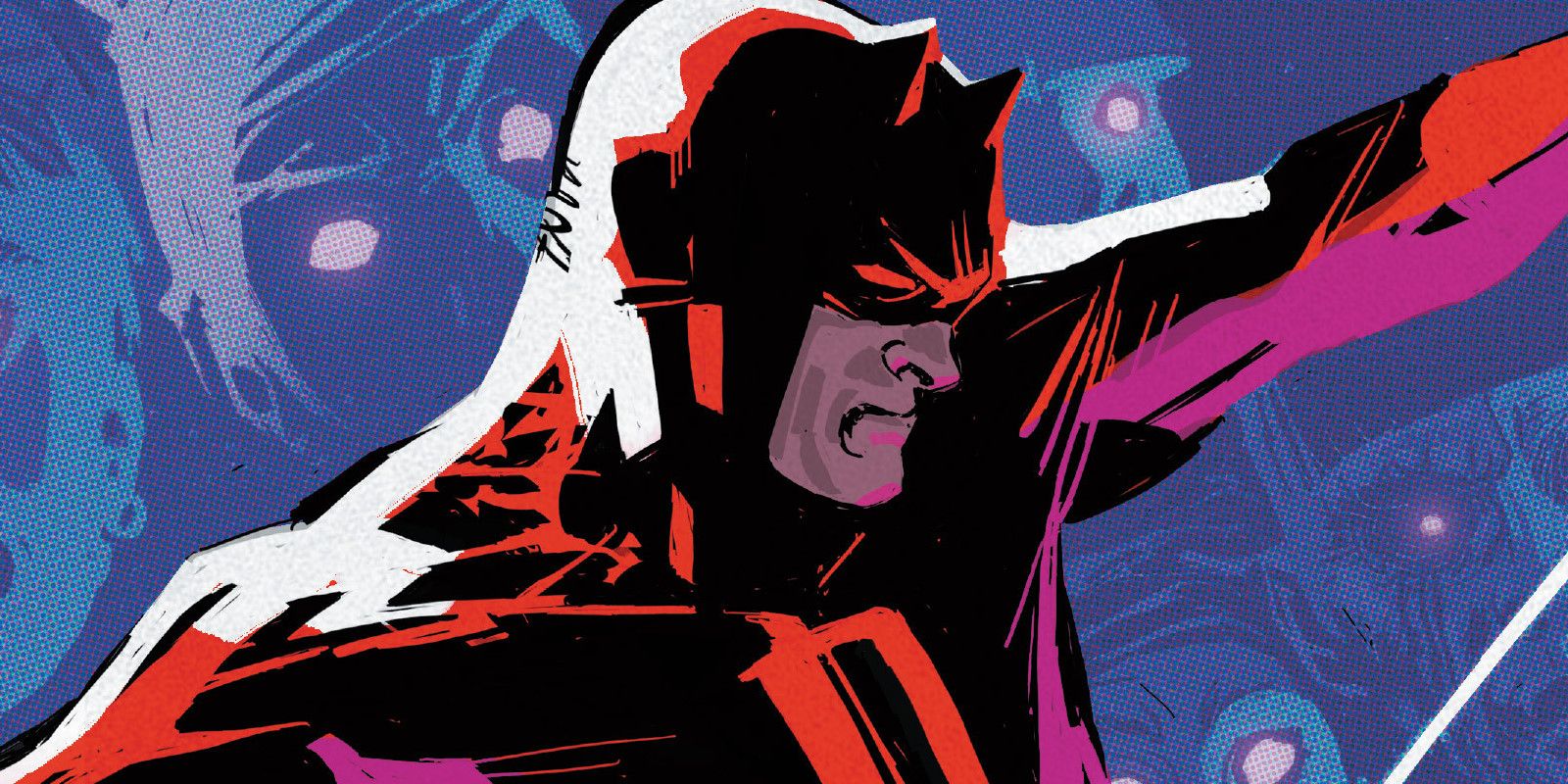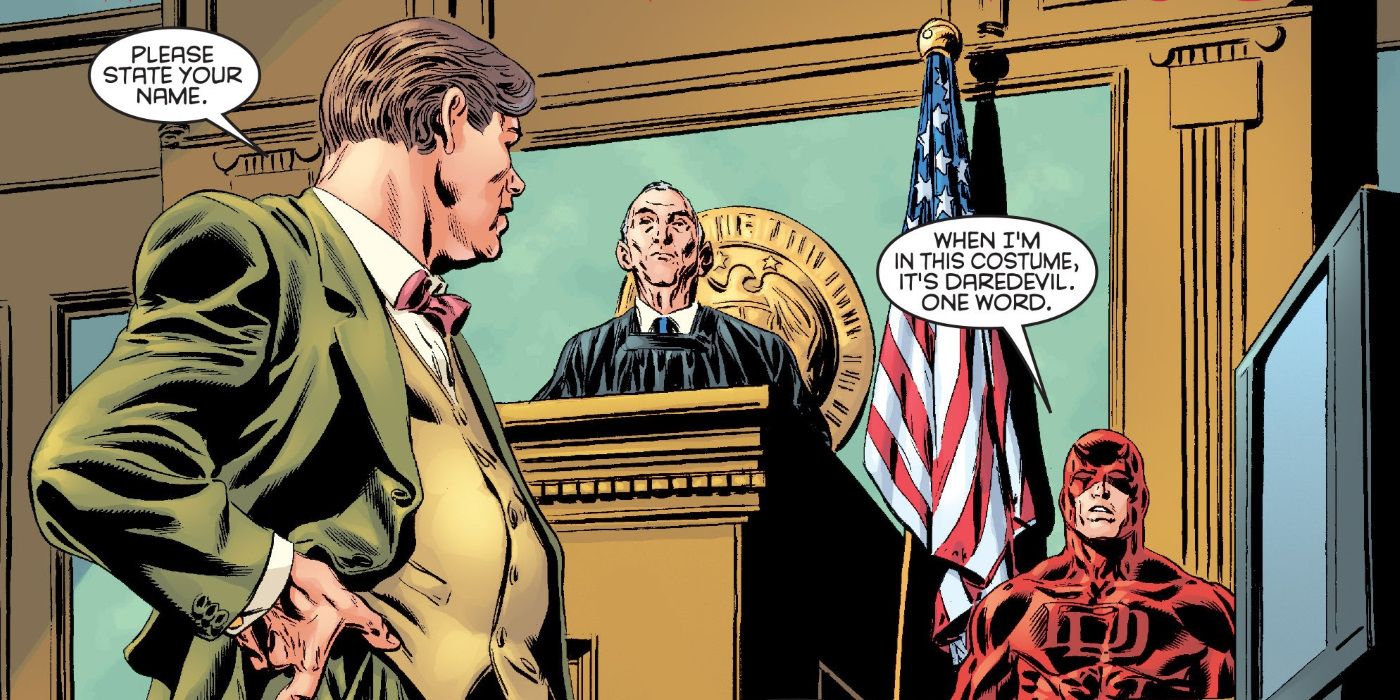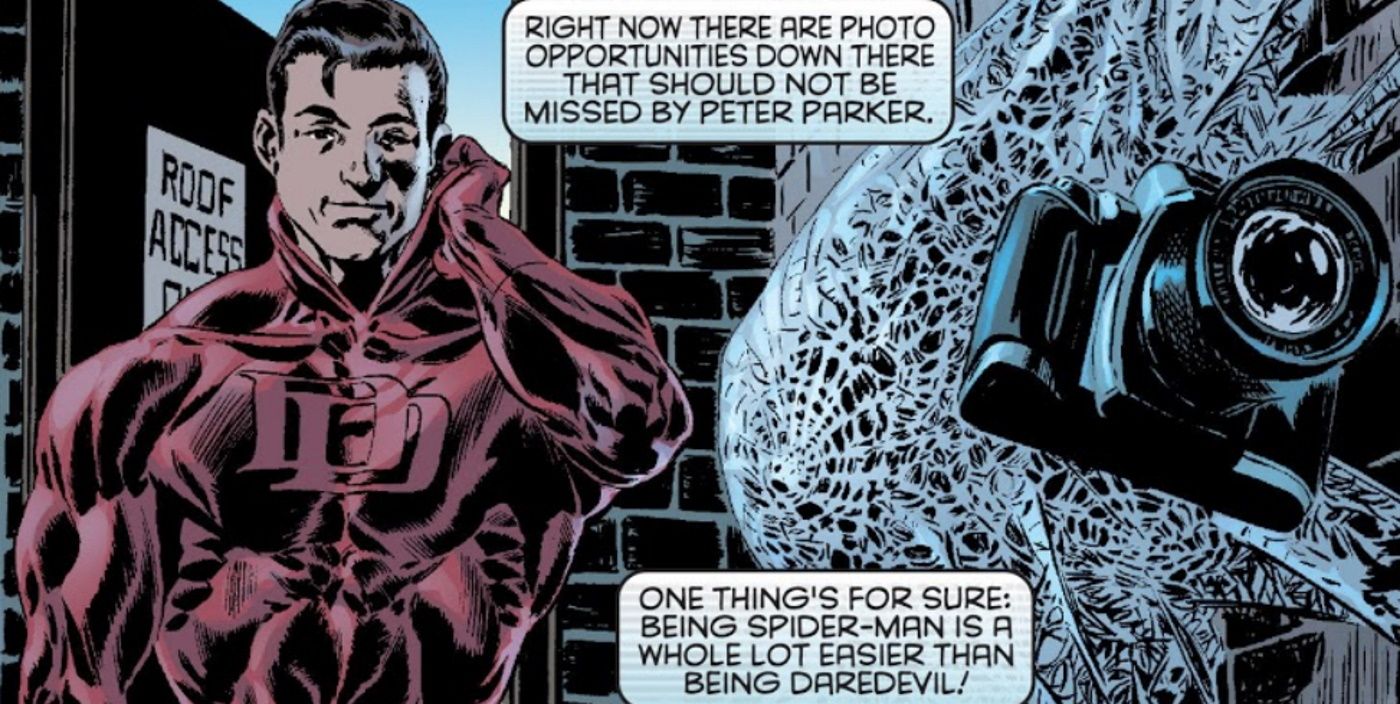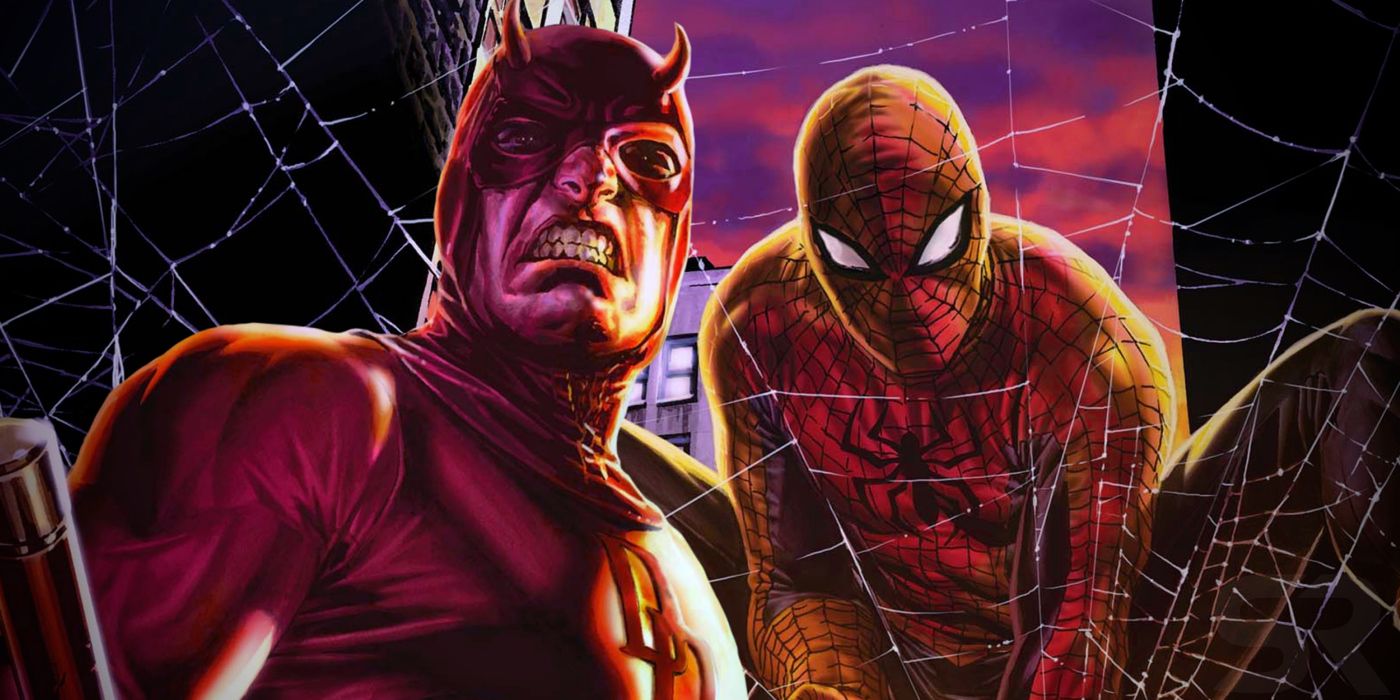Spider-Man and Daredevil share plenty of similarities. Both got their powers in a radioactive accident. Both function primarily as street-level vigilantes. And both have secret identities which need to be protected — which is why Matt Murdock knows that when he needs someone to fill in for him as the Man Without Fear, he can turn to Peter Parker.
On a practical level, this actually makes a lot of sense. Not only are these characters’ origins similar, but their abilities also overlap slightly, with Spidey’s spider-sense functioning very much like Daredevil’s radar sense. Surprisingly, however, when Matt finally did ask Peter to replace him, it wasn’t to have him fight crime!
This amusing story happened in the story arc “Playing to the Camera” which ran in Daredevil #20-25. In the tale, Matt Murdock receives a visit from wealthy philanthropist Samuel Griggs who informs the attorney that he wants to sue Daredevil. According to Griggs, Daredevil crashed into his private greenhouse one night while fighting some ninjas, causing thousands of dollars in property damage. Feeling New York’s vigilantes need to be held accountable for their destructive actions, Griggs asks Matt to represent him in the case — and even adds that he’ll donate a lot of money to a school for the blind if he does.
Although Matt’s partner Foggy Nelson tries to talk him out of accepting the case, pointing out that it’s both illegal and immoral to hire yourself to sue yourself, Matt disagrees. Knowing that he never damaged Griggs’ property as Daredevil, Matt hopes that by accepting the case, he can investigate the incident and clear his name before it ever goes to trial. Moreover, he realizes that if he doesn’t accept the case, Griggs might go to a less scrupulous attorney and turn the case into a media circus that would attract all sorts of unwanted attention.
Unfortunately, things don’t go as smoothly as Matt hoped. Griggs is adamant that he saw Daredevil damage his property and Matt’s hyper senses confirm that he believes he’s telling the truth. Matt’s new assistant actually hires a supervillain to serve Daredevil his legal summons, requiring him to legally appear in court. And to make matters worse, Daredevil’s investigation leads him to physically assault a doctor whom he believes implanted false memories in Griggs. When the assault is caught on video and shared with the press, things don’t look so good for Daredevil (although as Griggs’ attorney, Matt is now in a stronger position to successfully sue his alter ego).
As Matt realizes the case will go to trial, he also understands Daredevil will need an attorney of his own, so he hires a scrupulous lawyer named Kate Vinokur and agrees to pay her in cash to represent him. (Of course, since Samuel Griggs is paying Matt to represent him, Griggs is also unknowingly paying Daredevil’s legal fees). This creates a new problem, however — how can Daredevil appear in court if Matt Murdock also needs to be there? The answer? Spider-Man.
Having learned Peter Parker’s secret identity during Spider-Man’s original Sin-Eater storyline, Matt Murdock also shared his real identity with Peter. Since that time, the two have been both friends and confidants. And since Peter has a similar build to Matt’s and can replicate his acrobatic stunts with his spider powers, Matt gets him to don a spare Daredevil costume and fill in for his court appearances. Peter even takes the witness stand and confirms that “When I’m in this costume, [my name] is Daredevil.”
Ironically, since Peter is able to see, he can view videotapes of Matt’s Daredevil interacting with Samuel Griggs and even honestly state that the man he saw in the tapes isn’t him and that “it was someone else in a Daredevil costume.” His act fails to fool Daredevil’s lawyer Kate, however, who picks up on differences in Peter’s body language and voice. Nonetheless, it’s enough to create some doubt in the jury over which Daredevil is the real one — a doubt Matt exploits by appearing as Daredevil near a large public clock at the same time Peter appeared in court.
Things get more hectic when a third Daredevil crashes the courtroom and unmasks, revealing himself as a gymnast named Terrence Hillman who claims he was the Daredevil who destroyed Griggs’ greenhouse. In reality, Hillman had nothing to do with the destruction (which turns out to actually be just a series of false memories implanted in Griggs’ head by the mind-controlling villain the Ringmaster). Hillman was actually an out-of-work actor who used the media attention of the Daredevil trial to improve his public profile and impress girls, Hillman’s theatrics manage to cause enough confusion to get the case dismissed.
In the aftermath, Spider-Man/Daredevil leaps away, commenting on how the media circus surrounding the trial was like a zoo. He later meets up with Daredevil in his regular costumed identity and quips that Matt is lucky Hillman wasn’t a clone. While Daredevil’s attorney is incensed that the Man Without Fear used body doubles and manipulated the court system, Matt consoles himself with the knowledge that the fiasco still resulted in large donations for the blind and the needy.
Spidey found another reason to dress up like Daredevil a few years later when Spider-Man was targeted by some villains, making it advantageous for him to throw them off the scent by going out as a different costumed hero. Oddly enough, Spider-Man had to make sure the suit he borrowed from Matt had eyeholes so he could see through them — even though the suit he wore during Daredevil’s trial had the usual red material over the eyes. Either Spidey was able to alter his Daredevil mask with a version of the mirrored lenses on his own mask, or Daredevil uses a see-through material for his costume (which really wouldn’t matter one way or the other to someone like Matt Murdock).
Superheroes have filled in for their fellow costumed adventurers for a variety of reasons, but few have probably been called on to do what Spider-Man did for Daredevil. Given the ridiculous media circus, Matt’s trial became, even the perpetually unlucky Peter Parker had to admit, “Being Spider-Man is a whole lot easier than being Daredevil!”




